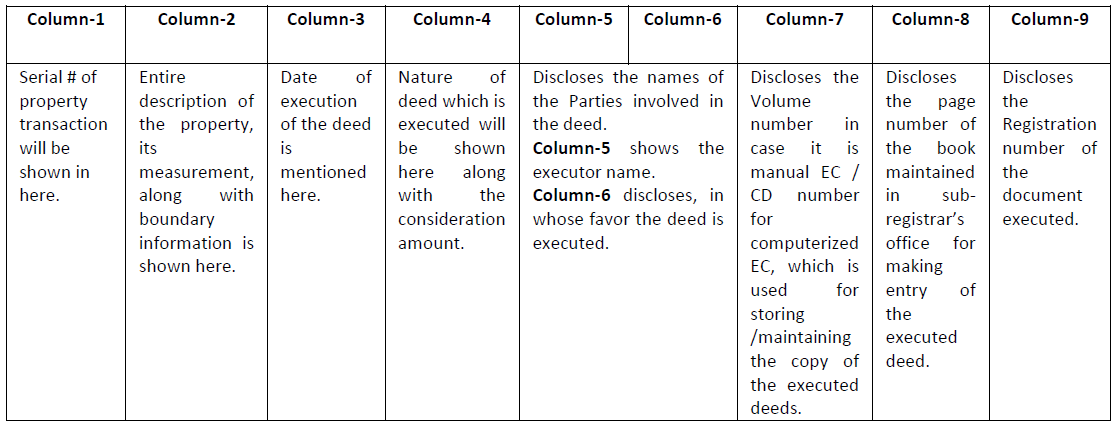In an encumbrance certificate you track the registered transactions of the property, consideration amounts (registered property value), property details, date of transactions, type of registered deed, document number registered in sub registrar office and names of parties who transacted, by studying the Encumbrance certificates.
There are many aspects of litigation, encroachments, land use status, land conversion procedures, PTCL endorsements, record of rights/tenancy and crops, notifications for acquisition, compliance with town planning guidelines, clarity on current owners’ family tree and their rights, unsecured hand loans, etc. which are not captured in EC. Hence, examining the EC alone is clearly not enough to make the property buying decision. One should consult a property lawyer who examines all these and much more to ensure your investments stay safe.
A typical form-15 EC will look this,
https://www.zippserv.com/zipwp/wp-content/uploads/2017/07/Encumbrance-certificate-bangalore-form-15.pdf
How to decode,
